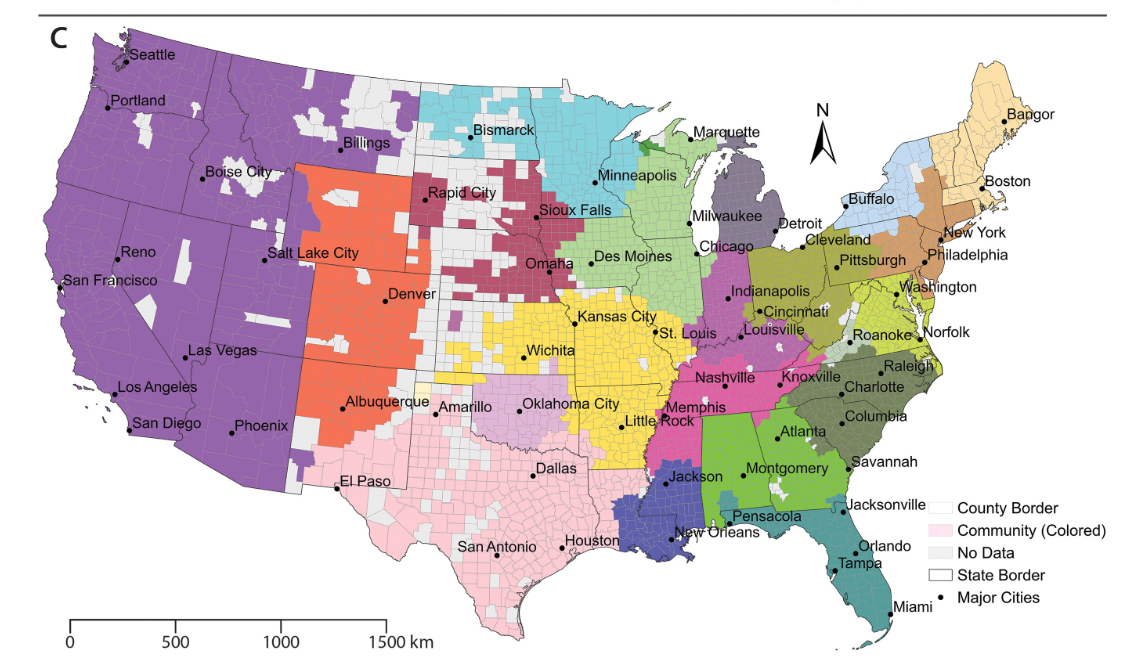
Understanding the impacts of the COVID-19 pandemic on domestic migration patterns is crucial for addressing resource needs and migration forecasting. Only a limited number of studies, however, have explored these dynamics through the lens of network analysis.
Using Internal Revenue Service (IRS) county-to-county migration data, this article conceptualizes the U.S. domestic migration system as complex networks and employs tools such as backbone extraction, centrality analysis, and community detection to examine the spatiotemporal shifts in the migration landscape before and during the pandemic.
Our findings reveal a diversification in migration destinations, yet the overall network structure exhibits stability, with central hubs maintaining their pivotal roles and regional communities showing substantial resilience over time. Disruptions, when observed, were generally regional and modest in magnitude. Further, an analysis of adjusted gross income data within the IRS data sets uncovers a pronounced spatial clustering of migrant wealth, suggesting a deliberate selection of destinations by wealthier migrants.
This research offers a novel perspective on understanding domestic migration in the face of external shocks, such as the COVID-19 pandemic, enriching the discourse on migration studies and providing invaluable insights for policy formulation and urban development.
Xu, A., Hu, Y., & Wang, J. (2025). Unraveling the COVID-19 Impact on Spatiotemporal Dynamics of US Domestic Migration: A Network Perspective. The Professional Geographer, 1-17.